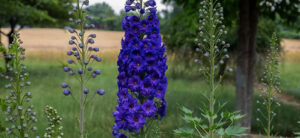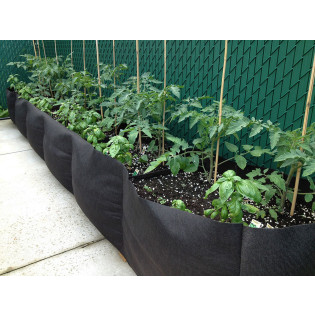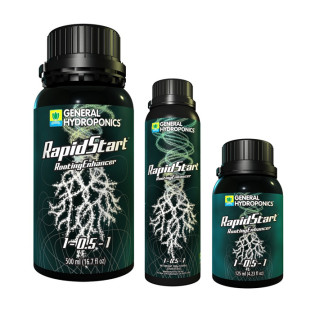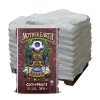
If you’re looking to add a new flower in your backyard garden, look no further than learning how to grow delphinium.
This show-stopping flower is a perennial that is grown for its showy spikes of flowers in all shades of purple, white, pink, and blue.
Popular in cottage-style gardens, delphiniums are great for cutting arrangements and a favorite of gardeners everywhere.
Lots of people claim to have trouble growing delphinium - and truth be told, it’s not always easy.
Delphiniums like damp, cool weather and don’t do well in hot or arid conditions. That said, they aren’t fond of heavy wind or rain, either. This means if you plan on growing it, you'll need to really tend to these plants and set up the right conditions.
Despite this, it’s not challenging to learn how to grow delphinium. You just need to follow these simple steps we'll lay out in a moment.
What Is Delphinium?
Technically, delphinium is the name of a genus of plants that contains more than 300 species! They aren’t all that similar to each other, either.
Some are annuals while others are perennials. Some are easy to grow from seed while others are significantly more challenging.

Despite the differences, delphinium flowers offer all the best there is to summer, with beautiful spiky blooms on statuesque stems.
They can be found in all colors and sizes, growing anywhere between two and six feet tall.
While they are normally planted in large bunches or groups, shorter delphiniums also make wonderful statement pieces elsewhere in the garden.
Is Delphinium Poisonous to Touch?
Delphinium plants, particularly younger portions of the plant, are extremely poisonous. The seeds, too, are toxic.
When ingested, they can cause severe digestive issues, and if touched, they can cause skin irritation.
In some severe cases, ingesting delphinium can lead to paralysis, muscle spasms, and even death.
Therefore, when growing these florals in your garden, you should plant them where you or your pets won’t have to come into direct contact with them.
Do Delphiniums Bloom The First Year?
If you plant in the spring, your flowers should bloom the first year. In fact, delphiniums are some of the fastest blooming flowers around, which is why many people treat them as annuals instead of perennials.
What Are The Best Delphinium Varieties To Grow?
There are hundreds of types of delphiniums you can grow. Some of the most popular belong to the Belladonna group.
Atlantis is one example. This beautiful cultivar grows up to 23 inches tall and has a lovely deep violet color.
The Elatum group is another choice. Some of the most popular Elatum cultivars include the Highlander flowers (some of the largest delphiniums around), the New Zealand hybrids, and the Pacific Giant hybrids.
As you might expect, this last group grows best in the western portion of the United States.
What Is Needed To Grow Delphiniums?
You don’t need much in order to grow gorgeous delphiniums. If you’re growing in a container (or starting these plants from seeds or cuttings), you will need some good potting soil and a container with excellent drainage.
Fabric pots are a good idea, as they’ll offer adequate drainage without making watering a constant chore.
Natural sunlight is best when you’re growing delphiniums. This will provide the least shock when you transplant your flowers from seedlings indoors to an outdoor environment.
While you are shopping, you may also want to pick up some fertilizer. You don’t need a lot - and organic amendments often suffice when it comes to giving your flowers the boost they need.
How To Grow Delphinium In Your Backyard
Now, you came here to learn how to grow delphinium - and that's what we're going to teach you now.
You should be aware of what varieties you should grow, as well as what garden supplies you'll need to get it done right.
Growing delphinium is pretty simple if you know what conditions to provide, where to plant it, and how to care for it. Here is what you need to know.
Where Is The Best Place To Plant Delphiniums?

Delphiniums are best planted in a location that receives full sun or partial shade. It should have some shelter from strong winds, so planting these flowers along a hedge, a building, or another kind of windbreak is a good idea.
What Conditions Do Delphiniums Like?
These perennials should be grown in fertile, well-draining soil. They prefer alkaline soil, so adding some lime or wood ashes to the soil in spring is a great way to give your plants what they need.
The soil should not become overly dry. Water your plants during the summer if you receive less than one inch of rainfall per week.
You should also apply a balanced liquid fertilizer every two to three weeks. The soil should be sun-warmed and consistently moist.
Mulch can help retain moisture and will also cool down the roots during hot weather. You don’t need to do much in the way of fertilizing, but you can do so in the spring, if you so choose, when the plant has first begun to grow.
You can also fertilize during the flowering period. To do this, just work in some well-composted organic matter, like cow manure, or use a 10-10-10 granular fertilizer.
Use Plant Support When Growing Delphiniums
Delphiniums can be floppy if you don’t stake and trellis them. Another option is to use a circular grid support.

These consist of writing rings filled with patterns of cross wires and then supported by stakes that sink into the ground.
Install these early in the spring to help give your plants time to grow up through the grid. Staking or trellising is especially important when your delphiniums grow in locations where there is heavy wind or rain.
The stems of these flowers are somewhat fragile and can easily snap when exposed to any kind of stress.
Ideally, you should insert a support when you plant, but if you wait until later, just make sure you support your plants by the time they are about 12 inches tall. Use a sturdy stake - you’d be surprised at how heavy these plants can be!
Read our complete guide to using garden trellis for a detailed look on how to do this, or our plant training guide for a broad over look at why you need to consider adding some support.
Monitoring Delphinium Diseases & Problems
There are a few insect pests and diseases that are known to plague delphiniums. Keep an eye on your plants, but especially young plants.
By making sure the soil conditions are optimal and the watering is appropriate, you can usually prevent most issues.
The most common pests for delphiniums are slugs and snails, along with mites. These can normally be controlled with organic measures like sprinkling diatomaceous earth around the perimeter of the plants.
When it comes to diseases, watch out for bacterial and fungal spots, powdery mildew, root rot, rust, and leaf smut.
Again, these all can be prevented with proper watering and spacing between your plants.
Read our complete guide on how to water plants properly, because while something so simple may get overlooked, it can make or break your success with gardening!
Do Delphiniums Grow Back Every Year?
Depending on the type of delphinium you grow, most will grow back every year.
You can encourage their return by mulching around the plants to protect the roots during harsh weather.
During the growing season, you can expect a final bloom in the late summer or early fall.
How Do You Get Delphiniums To Rebloom?
If you find yourself missing the gorgeous, colorful spikes of your delphiniums, don’t panic - you can get them to rebloom.
When your flowers start looking ratty, you can cut back the plant without having to worry about harming it.

You’ll need to work quickly, though. Once the flowers fade, cut the flower stalk to the later buds that are located below the spent flower.
The flowering branches that reappear will be smaller and less vibrant, but will be beautiful nonetheless. They’re also great for flower arrangements!
After that second stage of flowering has finished, you can remove all of the stems, cutting the plant back to the fresh foliage at ground level.
You can add a bit of fertilizer to the soil around the plant to help it bounce back. Mulch with compost and water it regularly to help it rebloom again by the end of summer.
Final Thoughts On How To Grow Delphinium
Ready to start growing your own gorgeous delphinium flowers? Although you’ll want to carefully consider where you plant these toxic flowers, they offer plenty of benefits and natural appeal to the cottage gardener.
Pick up a few varieties and all of your seed starting equipment today - there’s no time to waste!









































